So, as you all probably know by now, Kim Damon, aka Mom Makes Cookies, is the artist behind the wonderfully vibrant hearts that are gracing our banner and backdrop as we speak.
Kim has also been an active contributor to many, if not all, of our Practice Bakes Perfect challenges, where she routinely pushes the boundaries of her cookie decorating and delights us with her colorful and often very dimensional fondant-topped cookies.
Today, we’ll be getting to know her a lot better by exploring her cookie decorating background, creative process, and dreams and goals, among other things.
So let’s get to it, shall we?
![]()
JMU: Hi, Kim. Thanks so much for agreeing to take the time to do this interview. I’m eager to learn more about you! First, let’s start with something you mentioned in your recent forum introduction. You suggested that one of your first forays into cookie decorating involved a collaboration with Rebecca Weld, aka The Cookie Architect, who is one of your neighbors in Potsdam, New York, USA. But, can you back up, perhaps even further, and tell us when you first started cookie decorating and what or who got you started? Also, do you make cookies for a living, or do you have other work?
![]()
KD: It really was Rebecca who sparked the flame. I marveled at photos of her spectacular (to scale) gingerbread house (complete with dragon and Sleeping Beauty)! Then she posted cookie shapes to tantalize, along with a challenge to others to create designs for those shapes. I immediately printed out the shapes, sketched owls, and sent them to her. She responded by setting a date to make them. And I hit the ground running.
My husband Tim and I own Bright Beginnings Day Care; Tim doesn't watch kids, but he keeps the grounds and does the payroll taxes and such. Tim also owns Damon Drums (which makes beautiful solid wood drums) and once owned Damon Rods (which manufactured fly rods). Tim and I are pretty unconventional business owners. We have survived on our talents and ingenuity for 18 years. It's what we do. We make stuff!
![]()
JMU: Wow - you and your husband really are quite the entrepreneurs! Now, tell us a little more about that collaboration with Rebecca. How did you two first meet, and can you share those owl cookies you two created together on that fateful decorating day?
![]()
KD: I had the honor of caring for Rebecca's boys at our day care center. Potsdam also has a great small business community, so Renew Architecture, Rebecca's business, and my husband's other business connected us too. Chatting each day, we got to know each other. And since we're both artsy, we were drawn to get together outside of our work environments.
Sure! The owl photos are below - the first set is mine and was the first time I used fondant, and the second set was done by both me and Rebecca, based on my sketches I mentioned earlier. We passed the cookies between us to complete them.
![]()
JMU: Darling owls by the both of you! You also mentioned in your forum intro that you became hooked on fondant at the time of that collaboration, and I can certainly see that it’s become central to much of your work. Why do you love working with fondant so much?
![]()
KD: I think it's how my brain works. I see things in 3-D in my mind, which made me delight in this element that I could make 3-D as well. I didn't have any cookie training to know how things were normally done, just this fantastic, sculptable palette and limitless possibilities!
![]()
JMU: Now that you’re clearly a fondant expert, what tips (top three) would you give to beginners who might be using fondant on their cookies for the first time?
![]()
KD: Wow. Humbled by your words. (1) Let others inspire you, but don't copy them. Your art will be better, as it will fit you and your style. (2) You don't need lots of fancy tools. I have them and usually end up using a paring knife and a toothpick. (3) Experiment. Artists are so hard on themselves if they don't have something fantastic on the first try . . . keep trying.
But those answers weren't related to working with fondant necessarily, so let me try again and I'll be more specific to fondant this time ![]() . . .
. . .
(1) Remember: Warmth makes fondant pliable; cold makes it stiff; butter or Crisco brings it back (meaning makes it pliable again), and confectioner's sugar takes away stickiness. (2) Color your own. (This gives you more options.) Mix gel coloring and fondant in a Ziploc or other plastic bag to keep your fingers clean. (3) After sculpting the fondant, paint for additional depth. Thinned royal icing painted over the top of fondant makes it look magical.
![]()
JMU: Thanks - such helpful tips! More about fondant . . . Many decorators seem to have a love-hate, or all-or-nothing, relationship with fondant, meaning they love how it shapes and handles, but hate its flavor, or they either love everything about it or would prefer not to use it at all. Why do you think this might be, and what would you say to fondant detractors?
![]()
KD: Many excel at getting what they want from royal icing. Fondant is just another tool in the box, and everyone has a favorite tool. It's easier for me to sculpt and paint than to mix lots of colors and fiddle with royal icing, which is less forgiving. If you make your own fondant, it's tricky, but I've been told (by my kids) that mine tastes like Skittles and is pretty wonderful. I added orange flavoring instead of vanilla.
![]()
JMU: Your Cookie Connection profile says that you’re a hobbyist decorator, but what does this mean exactly? Do you strictly decorate for fun? Or do you ever sell your cookies? How many hours per week do you spend cookie decorating, and how do you fill that time (with what types of projects), and why?
![]()
KD: Being self-employed at the day care center makes my time pretty flexible. I love a lot of people, and I love to give, so during Christmas I was “crafting” cookies, jewelry, chocolate-dipped Oreos . . . in every spare second. In the summer, my husband said: “Please don't take many orders. I'd like to spend time with you at the farm.” I gladly agreed. (BTW, we purchased land last year, and he built us a farm house to retire in!)
So depending on my season, I could work on cookies from 12 total hours in a day to two hours in a week. I think I had four big orders last year, with several dozen cookies each. But I'm happier when I'm doing art. So I love to have some cookies already made in the freezer, and to just take out a few to “doodle” whenever I'm inspired and have a few hours.
![]()
JMU: Do you ever intend to increase your focus on selling your cookies? Why or why not?
![]()
KD: As often as I'm asked, it's (honestly) not about the money. I've just rationalized my addiction to art. ![]() I really just love to have folks dream something, which I then get to create. I love people enjoying my art. Any money is a perk.
I really just love to have folks dream something, which I then get to create. I love people enjoying my art. Any money is a perk.
![]()
JMU: In addition to fondant, your cookies contain a lot of handpainting. Are you a natural-born painter, or did you study and practice to acquire these skills? What tips (top three) would you give to those just starting out with handpainting to help jumpstart their skills?
![]()
KD: I drew (everything in sight) with a pencil as a child. Some time in my teens, I picked up a paintbrush. And much like adding fondant to my cookies, adding color to my sketches blew my mind and took things to a new level of depth. As for those tips: (1) Everything you make has value. If you don't like what you see, it's easy to put down your paintbrush and give up. But if you try to learn from what you like/dislike, you will grow. (2) Study photos, not other artists. Often your style will emerge as you try to recreate nature. You limit yourself by others' interpretations of the image (and might break the law or hurt someone's feelings if you copy). (3) There are usually three types of hues in an object: shadows, highlights, and underlying natural colors. If you use all three, your image will look more realistic.
![]()
JMU: Once again, super helpful! You also seem to have a love for vibrant, very saturated colors, which give your work a lot of energy! Would you say this observation is true? Why or why not? And how do you achieve such saturated colors without eroding (dissolving) the underlying icing or fondant base?
![]()
KD: Good question. I didn't know I had a style (till I was told my style could be recognized). I dress with bright colors. I choose pretty accessories each day. I love color, so I guess my art shows that "brain preference". I use a paint palette. I squeeze out the colors and mix as I go. Royal icing hates water, so keeping your coloring thick (mixed with royal icing or mostly straight gel) will keep you from dissolving the underlying flooded area. But there is nothing you can't fix with painting! And with fondant, if you painted too dark, the area will wash off with some water on a brush.
![]()
JMU: Related to my last question, what type(s) of food coloring do you use for painting, and how do you apply it, meaning . . . Do you extend it with alcohol or water? If so, in what proportions? Do you have favorite brushes that you use for certain tasks or effects? If so, what are they, and why do you prefer them for those applications?
![]()
KD: I have only one preference with gel coloring: never use Wilton (it tastes bad!).* I most often use AmeriColor gel coloring. My first order of cookies was a Lord of the Rings set (pictured below), and I was so heartbroken to have tasted one after delivery, only to find it had a putrid horrible flavor from the coloring. I've never tried cutting the coloring with alcohol, but it looks pretty when others do. I just use water. My favorite brushes are tiny, fine-pointed ones. I buy the cheapest of the tiny choices and have no brand-love. I give them a haircut if they are unruly, or buy more.
*P.S. I'm not sure if I can say this here. But if I can spare one person the sadness [of its flavor], I would consider it a victory for the cookie industry.
![]()
JMU: We allow people to express their opinions here, so you're safe (for now, anyway)! ![]() Your Cookie Connection profile also says you once spent six hours on one cookie! Can you tell us what this cookie was, and why it took so long? Do you have a picture of it that you could share? I’d love to see what kept you riveted for so long!
Your Cookie Connection profile also says you once spent six hours on one cookie! Can you tell us what this cookie was, and why it took so long? Do you have a picture of it that you could share? I’d love to see what kept you riveted for so long!
![]()
KD: You have it! Actually several of the Lord of the Rings cookies took that long. The flaming eye (upper left) was pretty tricky. As was the Orc (center left), and Gollum (bottom, second from left). It was really the love for each character and for the story that made me take so long on each one. I think I made about 20 cents per cookie if you paid for my time, but it was a labor of love, and I'd do it again the same way.
![]()
JMU: Judging from the photos you sent me to display here, and also those in your Cookie Connection portfolio, you are well versed in many techniques (fondant, handpainting, stenciling, and piping, to name a few). But do you have a cookie Achilles’ heel, or a technique that you’re still dying to learn? What is it, and how, if at all, do you intend to go about honing that skill?
![]()
KD: Thank you so much for your kindness, Julia. I was scared of stencils till the Practice Bakes Perfect challenge that “forced me” to get out of my comfort zone and use them. I'm not the best at making royal icing do what I want. But I don't mind. In all art pieces, I ignore what is not best, or cover it up somehow. Once, I put my finger into a flooded cookie, so I put a pretty fondant thing over the top. To get better, well, time, patience, a sense of humor, and practice are the best instructors. 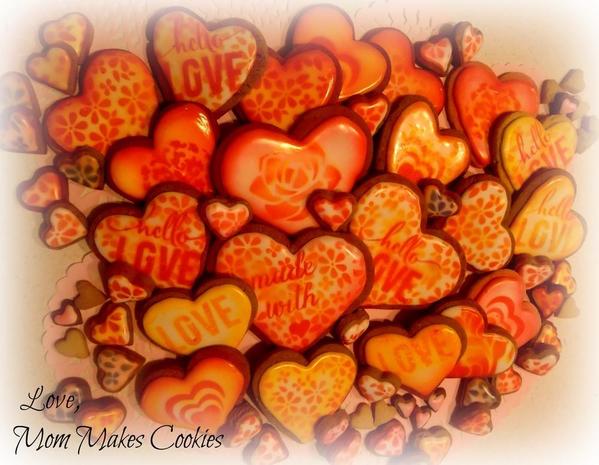
![]()
JMU: Yes, I often say cookie decorating is the art of disguising errors! ![]() And I see you've overcome your fear of stencils. Your stenciled hearts sure do look great!
And I see you've overcome your fear of stencils. Your stenciled hearts sure do look great!
Let’s move onto some broader questions about you and the cookie world. What do you like most about being a part of the cookie community? And what one thing would you most like to change about it, if you could?
![]()
KD: When I first came on this site, I was sad if folks didn't like my cookies. Now, I know and love lots of folks who make sugar art, and I know they are just busy. It's not personal. Also, personally, I'm more at peace with myself, so it doesn't matter if I get the likes. I make art because it makes me happy, and I share it because sometimes that makes others happy.
![]()
JMU: And, for the million-dollar question, what are your cookie aspirations and goals for the next few years? Would you like to continue on your same course, expand into other areas of the cookie world (like teaching or videos), or do something else entirely? And why?
![]()
KD: Life is a super fun journey for me. I feel blessed by all that God has given me. And most of what I have I feel I was given to share. So if opportunities present themselves, it's my pleasure to peruse them. Whatever they may look like, I'm grateful for this day, this page of my story, this time with you, these friends who are reading, and even my sink of dishes that I'll get to next. ![]()
![]()
JMU: Well, I can feel your positive vibe from here! I certainly hope that your journey in cookie decorating continues to be fun, as all of us here on Cookie Connection surely enjoy your work! Thanks so much for spending time with me today!
To learn more about Kim, please visit her blog, Facebook page, and profile on this site.
All cookie and photo credits (except owl image #2) by Kim Damon; Owl image #2 by The Cookie Architect and Kim Damon.

Cookier Close-ups is the place on Cookie Connection where we celebrate the change-makers of the cookie decorating world. Whether forging new enterprises, inventing novel decorating techniques, or consistently charming us with their cookie decorating prowess, each of our featured thought leaders has redefined in his/her distinctive way how we interact, create, or otherwise do business here in cookie space!
If there are other cookiers you'd really like to get to know, please post requests in this forum. We'll do our best to round them up for an upcoming Cookier Close-up! Thanks!


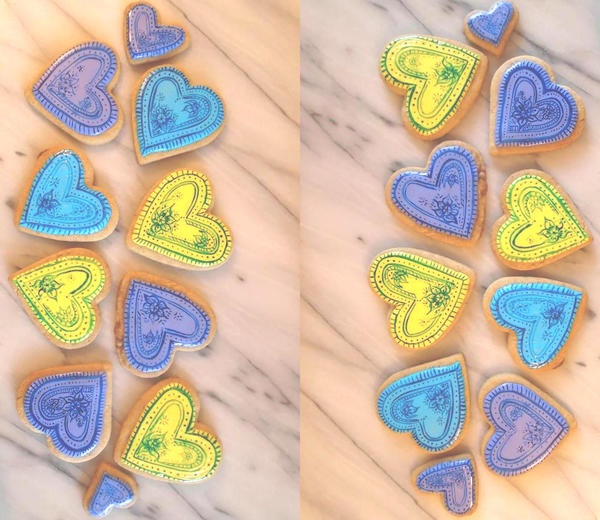
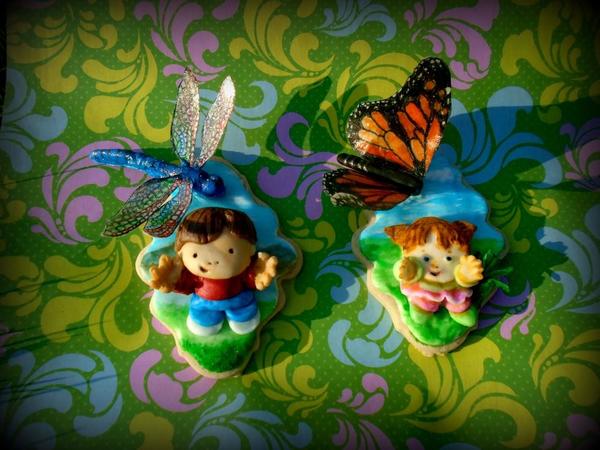
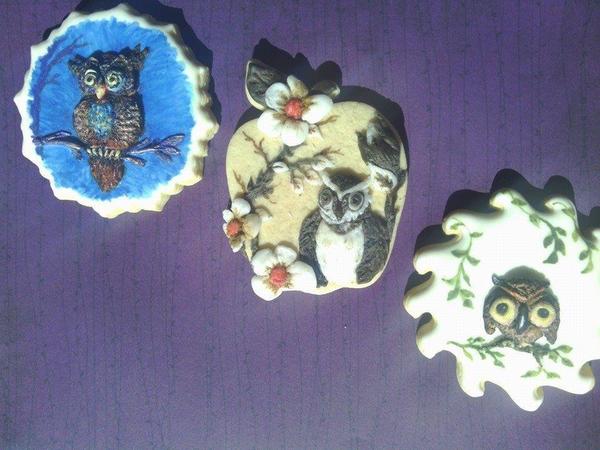
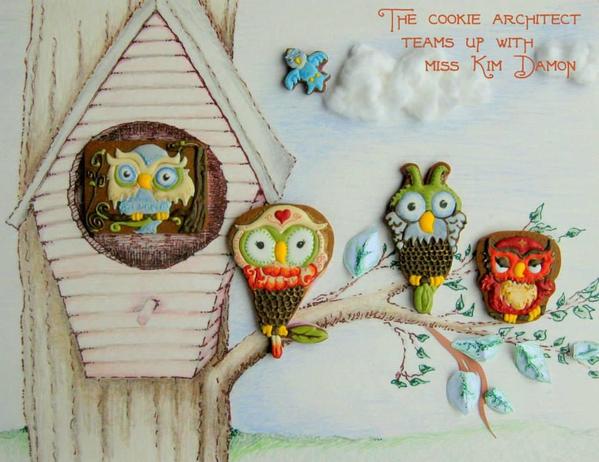

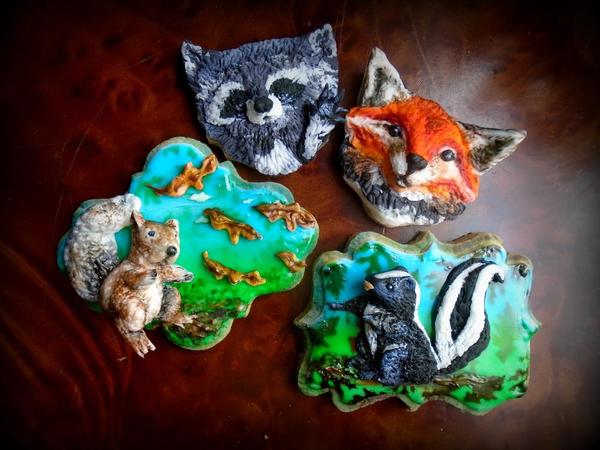
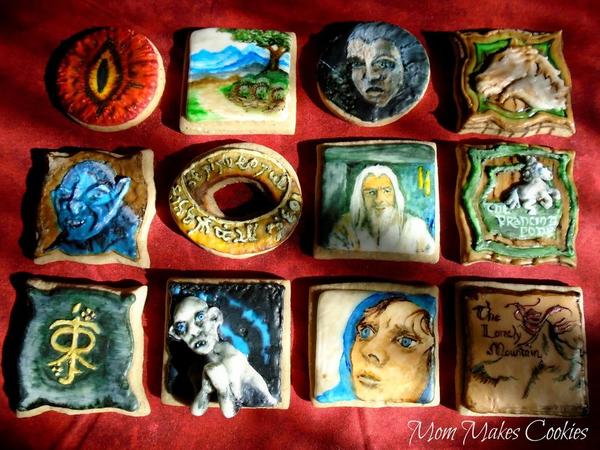
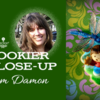
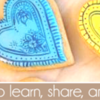
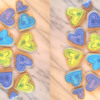
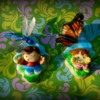


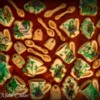
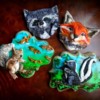
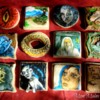
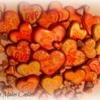
Comments (20)